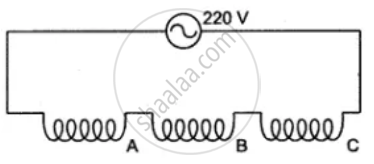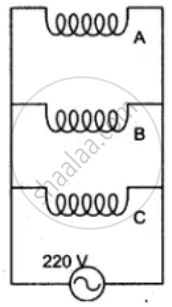Advertisements
Advertisements
Question
In current electricity, a positive charge refers to ______.
Options
presence of electron
presence of proton
absence of electron
absence of proton
Solution
In current electricity, a positive charge refers to absence of electron.
APPEARS IN
RELATED QUESTIONS
Fill in the blank:
To increase the effective resistance in a circuit the resistors are connected in _____________.
What actually travels through the wires when you switch on a light?
An electric bulb of resistance 20 Ω and a resistance wire of 4 Ω are connected in series with a 6 V battery.
Draw the circuit diagram, and calculate:
(a) total resistance of the circuit.
(b) current through the circuit.
(c) potential difference across the electric bulb.
(d) potential difference across the resistance wire.
A p.d. of 6 V is applied to two resistors of 3 Ω and 6 Ω connected in parallel. Calculate:
(a) the combined resistance
(b) the current flowing in the main circuit
(c) the current flowing in the 3 Ω resistor.
A switch must be connected in:
(a) Live wire (b) neutral wire
(c) earth wire (d) either earth or neutral wire
A given wire of resistance 1 Ω is stretched to double its length. What will be its new resistance?
The diagram shows two ways of connecting three lamps P, Q and R to A.C. supply of 220 V.


